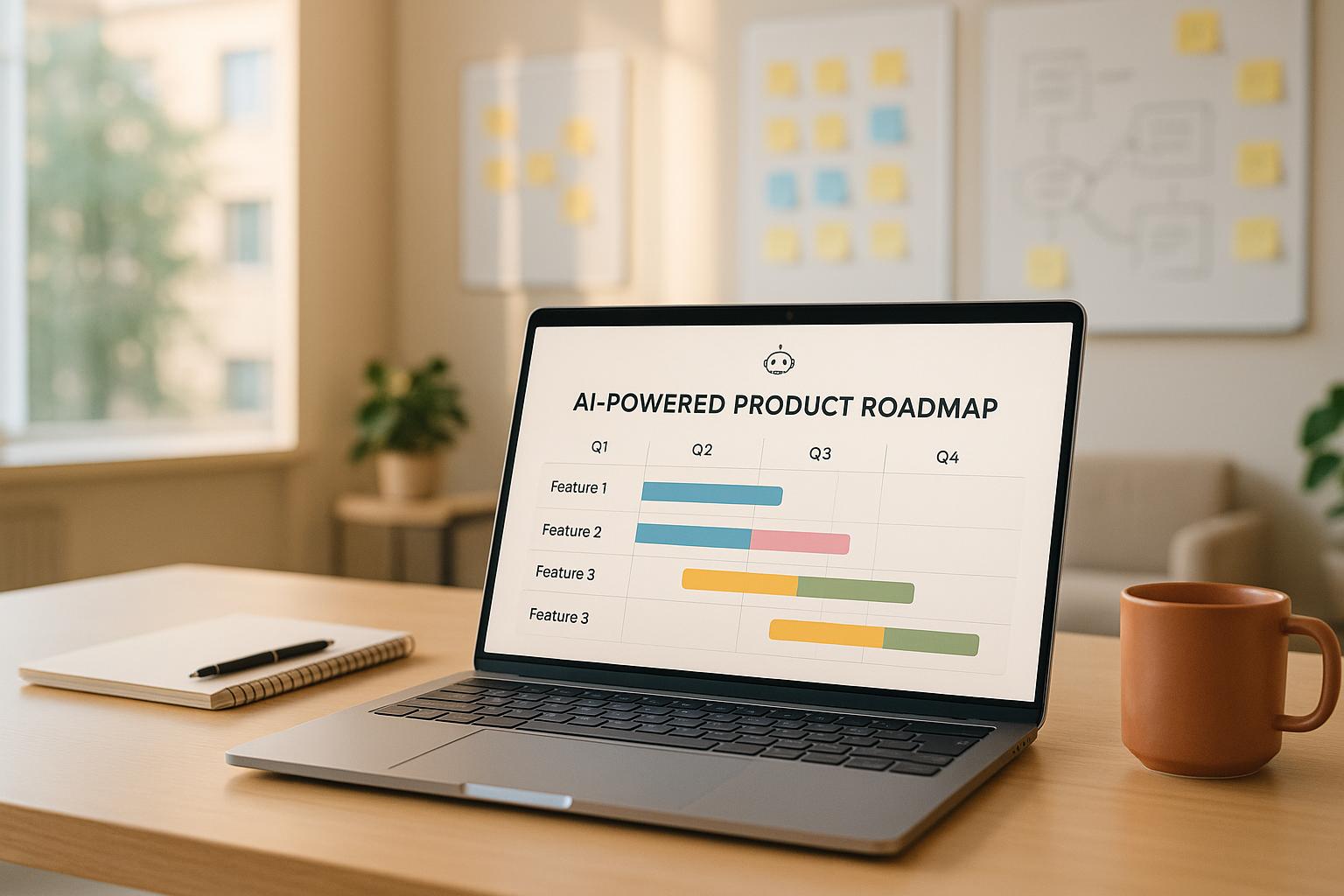From POC to Production: Hardening Your BIM Microservices Architecture
Taher Pardawala August 7, 2025
Building Information Modeling (BIM) microservices can revolutionize construction workflows – but scaling from a proof of concept (POC) to production is no small feat. This transition demands robust architecture, airtight security, and efficient data management to handle sensitive project data, ensure reliability, and meet the high demands of real-world construction projects.
Key takeaways for hardening your BIM microservices architecture include:
- Security First: Protect sensitive BIM data with API authentication, mutual TLS (mTLS), and database encryption. Centralize authentication at the API gateway and enforce strict access controls.
- Scalable Design: Use containerization tools like Kubernetes for automated scaling and resource management. Modular microservices with clear boundaries allow for independent updates and reduce risks.
- Reliable Communication: Implement service discovery and load balancing to maintain smooth interactions between microservices. Tools like service meshes (e.g., Istio) enhance security and simplify management.
- Data Management: Choose the right database (SQL for structured data, NoSQL for flexibility) and optimize with indexing, caching, and partitioning. Regular backups and geo-replication protect against data loss.
- Monitoring and Resilience: Set up centralized logging, health checks, and disaster recovery plans. Use tools like Prometheus and Grafana for real-time insights and automated alerts.
This guide covers actionable strategies to strengthen your BIM microservices, ensuring they are secure, scalable, and resilient for production environments.
Deploying microservices: the path from laptop to production by Chris Richardson
Building a Scalable and Modular Architecture
Developing a scalable BIM microservices architecture involves making smart architectural choices that support long-term growth and adaptability. Angela Davis highlights the advantages of this approach, stating, "By breaking applications down into small autonomous services, microservices enable greater flexibility, innovation, and performance than monolithic legacy systems" [1]. This modular foundation is key to ensuring robust security and efficient system management, as explored in the following sections.
Designing Microservices with Clear Separation
At the heart of a strong BIM microservices architecture is a clear separation of concerns. Each microservice should focus on a specific business function – whether that’s model validation, file conversion, or user authentication.
Domain-driven design (DDD) provides a reliable framework to achieve this separation. By dividing your BIM platform into subdomains and bounded contexts, you establish clear boundaries between services. For example, your model management service should operate independently from your user management service, with each maintaining its own database and business logic.
This separation offers real benefits. Microservices design patterns allow for independent deployments [1]. Your team can update the file conversion service without affecting the authentication system, reducing deployment risks and accelerating iteration cycles.
Keeping microservices small and focused simplifies management, debugging, and deployment. It also prevents widespread failures – issues in one service won’t cascade and disrupt the entire platform. Ensuring that each service has its own database storage further enhances isolation, so a problem in one database doesn’t impact others.
When it comes to communication, asynchronous messaging is often the best choice. This reduces system load and boosts reliability, which is especially important for BIM workflows involving large file transfers and complex processing tasks. With clearly defined service boundaries, container orchestration can further streamline deployment and resource management.
Using Containerization and Orchestration Tools
For BIM microservices, tools like Kubernetes are indispensable. Kubernetes automates deployment, scaling, and management, which is critical for handling the resource-heavy workflows associated with construction data [3].
This platform simplifies scaling and monitoring. For instance, during peak design phases, your model processing services might need to scale up significantly, while during quieter planning phases, resource demand may drop. Kubernetes enables automatic adjustments to match these fluctuations.
Key features of Kubernetes – such as automatic scaling, self-healing, and rolling updates – are particularly valuable for BIM workflows [2]. For example, if a container fails during a large model conversion, Kubernetes can restart it automatically, ensuring minimal disruption. This not only enhances scalability but also strengthens the reliability and security of your workflows.
To make the most of Kubernetes, define resource requests and limits for CPU and memory to avoid resource contention. BIM processing can be demanding, so careful resource management ensures that no service starves others of resources.
Monitoring is another critical aspect. Use readiness and liveness probes to continuously check service health. For BIM services, this might involve verifying that the model processing engine is responsive or that database connections remain stable.
Configuration management is equally important. Use ConfigMaps for non-sensitive data and Secrets for sensitive information. Versioning configurations alongside your application code improves traceability and ensures consistency – essential for managing sensitive project data across multiple environments.
Service Discovery and Load Balancing
With a modular design and automated orchestration in place, efficient service discovery and load balancing are crucial for maintaining high availability and performance. As your BIM microservices architecture expands, services need a reliable way to locate and communicate with one another. Service discovery mechanisms enable microservices to connect dynamically, enhancing flexibility and resilience [5].
Dynamic service discovery – using service registries or service meshes – is far more effective than hardcoding service locations. For instance, when a model validation service needs to communicate with file storage, dynamic discovery ensures smooth connections without relying on static IP addresses.
Load balancing is another critical component, distributing traffic efficiently across multiple service instances to optimize resource use and ensure high availability [5]. For BIM platforms, this means your file conversion service can handle multiple large models simultaneously by spreading the workload across various instances.
A great example of this approach comes from Airbnb. During their transition to microservices, they developed SmartStack, which includes Nerve for service registration and Synapse for service discovery and load balancing. This system allowed services to scale independently and communicate seamlessly, with load balancing adding resilience and automatic failover [5].
Kubernetes Services offer built-in network load balancing functionality [4]. For BIM workloads, you can optimize this by enabling readiness and liveness probes to ensure traffic is only routed to healthy Pods. Additionally, applying network policies can restrict traffic to what’s strictly necessary, improving security.
Choosing between Layer 4 (L4) and Layer 7 (L7) load balancing depends on your needs. L4 operates at the transport layer, routing traffic based on IP addresses and ports, while L7 works at the application layer, enabling routing decisions based on request content [5]. For BIM platforms, L7 load balancing often provides greater control, allowing you to route specific types of model processing requests to specialized service instances.
Finally, monitor your network to ensure smooth connectivity. Use tools that offer Pod-level visibility into service performance. This level of detail is essential for troubleshooting performance issues in complex BIM workflows that involve multiple interconnected services.
Securing APIs and Service Communication
Once you’ve set up a scalable architecture, the next step is to ensure every service interaction is secure. With distributed microservices, you’re dealing with multiple entry points, each requiring strong protection. According to the Ponemon Institute, 80% of data breaches are tied to weak access controls [10]. This makes security a critical aspect of any production-ready system.
The stakes are even higher when working with BIM data, which often includes sensitive project details, proprietary designs, and confidential client information. To address these challenges, focus on three major areas: API authentication and authorization, secure inter-service communication, and database protection.
API Authentication and Authorization
Authentication verifies identity, while authorization determines access rights. Both are crucial for distributed systems handling sensitive construction data and project files.
A practical approach is to centralize authentication at the API gateway. This ensures client credentials are verified before requests are forwarded to backend services [9]. By managing authentication at a single entry point, you simplify operations while maintaining tight security. For instance, the API gateway can handle all incoming requests for services like model processing, file conversion, or project management.
JSON Web Tokens (JWT) are widely used for secure authentication in microservices [6][7]. Their self-contained structure allows services to validate tokens without additional database queries. For example, a project manager’s JWT could include details like role, project permissions, and access levels, streamlining access across services.
For access control, choose between Role-Based Access Control (RBAC) and Attribute-Based Access Control (ABAC). RBAC is straightforward for smaller systems, while ABAC offers more flexibility for complex environments [7]. In BIM workflows, ABAC often works better since it can factor in user roles, project phases, model sensitivity, and client requirements to determine access.
Adopt a layered approach to authorization by enforcing it at both the API gateway and individual services [7][8]. This ensures that even if a request bypasses the gateway, the services themselves can validate permissions and block unauthorized access.
To implement this securely:
- Use a private-public key pair for signing and validating JWTs [6].
- Store private keys securely and rotate them regularly. Stale credentials are a common issue, with 75% of companies reporting compromised accounts due to outdated credentials [10].
- Consider a centralized session store accessible to all services. This reduces the need for repeated authentication requests, improving performance and security [6].
Next, focus on securing communication between services.
Secure Inter-Service Communication
Protecting communication between BIM microservices involves multiple layers of security. Improper access management accounts for 71% of breaches [10], highlighting the importance of secure service-to-service communication.
Mutual TLS (mTLS) is a powerful tool to prevent man-in-the-middle attacks, reducing such risks by up to 90% [10]. Unlike standard TLS, mTLS requires both the client and server to authenticate each other, ensuring a secure channel. This is especially critical for BIM workflows that handle large file transfers and sensitive project data.
API gateways enhance security by enforcing policies like rate limiting and token validation, which can improve incident response times by 70% [10]. These measures prevent malicious actors from overwhelming your services or accessing restricted resources.
For added protection, consider using service mesh frameworks like Istio or Linkerd. These frameworks simplify security management and can reduce operational overhead by 60% [10]. They also automate certificate rotation and enforce policies, minimizing configuration errors that could expose your services.
When choosing a communication protocol:
- gRPC is ideal for internal microservices, thanks to its high performance and use of Protocol Buffers, which are great for transferring large model files.
- REST remains the go-to for client-server interactions.
- MQTT is suitable for IoT applications that might integrate with your BIM platform.
Automate the rotation of access keys and certificates. Misconfigured access accounts for over 40% of breaches [10], so proper configuration management is essential.
Finally, ensure your data is protected both at rest and in transit with strong database security practices.
Database Security Best Practices
Securing your database is a cornerstone of BIM data protection. Construction projects often involve sensitive designs, financial details, and client information, so your database security strategy must include encryption, access control, and audit logging.
Encryption is key. Use TLS/HTTPS to encrypt data in transit between microservices [7], ensuring model files, project documents, and user details remain secure as they move through the system. For data at rest, enable database-level encryption to safeguard stored models, project histories, and user credentials.
Enforce Role-Based Access Control (RBAC) and follow the principle of least privilege. This approach limits access based on job roles, reducing insider threats. For example, model viewers might only have read access to geometry data, while project managers are granted broader permissions. A study by Cybersecurity Insiders found that applying least privilege reduces insider threat risks by 60% [10].
Audit logging is another must-have. Logs should track who accessed what data, when they accessed it, and any changes made. Regular audits can cut recurring incidents by 40% [10]. Advanced logging strategies, including automated alerts for suspicious activities, can reduce incident response times by 37% [10].
To further strengthen database security:
- Incorporate automated vulnerability scanning into your CI/CD pipeline. This helps catch issues early, with 60% of companies reporting improved security in software deployments [10].
- Keep your database systems updated with the latest patches. Unpatched vulnerabilities are linked to 60% of data breaches [10].
- Use database activity monitoring tools to detect unusual behavior in real time, such as insider threats or automated attacks targeting your BIM data.
sbb-itb-51b9a02
Managing Data Storage for BIM Workflows
Efficient data storage is the backbone of production-ready BIM microservices. These systems handle vast amounts of complex data, from intricate 3D geometries to detailed project timelines. A well-planned storage strategy not only boosts performance but ensures your system can grow securely as projects become more demanding. On the flip side, poor storage management can slow down operations and create bottlenecks.
BIM workflows deal with a mix of relational geometric data, large multi-gigabyte files, and frequent updates. This requires support for spatial queries, version control, and real-time collaboration. Unlike standard web applications, BIM systems must handle intricate spatial queries, track design versions, and synchronize updates across distributed teams.
Choosing the Right Database for BIM Data
The choice between SQL and NoSQL databases depends on factors like data volume, query complexity, and the need for a fixed schema [11].
SQL databases are ideal when BIM data involves clear relationships and complex queries. For example, PostgreSQL supports geometric data types and spatial indexing, making it a strong choice for storing building elements with precise coordinates. When tasks require frequent joins – such as connecting project data, user permissions, and model hierarchies – SQL provides the structure needed.
NoSQL databases, on the other hand, excel at managing unstructured metadata, handling rapid schema changes, and scaling to massive datasets. MongoDB’s document-based model is particularly useful for storing variable attributes of building components, especially when different elements have unique properties. This flexibility is essential when integrating data from various BIM tools.
Performance benchmarks can guide your decision further. Systems needing extremely high performance (over one million IOPS) often benefit from NoSQL solutions. For moderate performance needs (10,000 to 500,000 IOPS), either database type can work. For applications requiring real-time collaboration, aim for latency under one millisecond [12].
| Aspect | SQL Database | NoSQL Database |
|---|---|---|
| Data model | Relational tables with fixed schemas defining relationships | Flexible or schemaless (e.g., document, key-value, graph) |
| Schema | Predefined, suitable for normalized data and well-defined relationships | Flexible, suited for evolving or unstructured data |
| Scalability | Vertical scaling (adding resources to a single server) | Horizontal scaling (adding nodes for large datasets and distributed systems) |
| Performance | Strong for complex queries and multi-row transactions | Optimized for fast reads/writes at scale |
| Pros | Mature ecosystem, strong transaction support, consistent structure | Easy scaling, flexible data modeling, ideal for large datasets |
A hybrid approach can also work well [11]. For instance, structured project data might be stored in PostgreSQL, while MongoDB handles metadata and file references for building components. This allows each microservice to use the best database for its specific needs.
Another best practice is the "Database per service" pattern, where each microservice owns its data and interacts with others through APIs. This approach reduces tight coupling and allows teams to tailor database choices independently [13].
Once you’ve selected the right database, optimizing its performance is essential for handling BIM’s demanding workloads.
Improving Database Performance
As BIM projects grow – from small homes to sprawling commercial complexes with millions of elements – database optimization becomes crucial. Here’s how to keep performance on track:
- Indexing and Query Optimization: Index frequently queried fields like element IDs, spatial coordinates, and timestamps. Use spatial indexing to speed up complex queries, such as finding elements in specific zones [11].
- Caching and Connection Management: Implement caching tools like Redis or Memcached for frequently accessed data, such as building elements or user permissions. Manage connection pools to handle traffic spikes, and use time-based expiration to maintain consistency.
- Data Partitioning: Split large datasets by project ID, building phase, or element type. This improves query performance and supports parallel processing.
- Performance Monitoring: Regularly track query execution times, connection pool usage, and cache hit rates. Set up alerts to catch performance issues during busy collaboration periods.
Once performance is optimized, focus on securing your data with strong backup and recovery plans.
Data Backup and Recovery Planning
Protecting BIM data requires a robust backup and recovery strategy. Key steps include:
- Automated Backup Scheduling: Schedule daily incremental backups for active projects and weekly full backups during low-activity periods.
- Geo-replication: Store critical data in multiple geographic locations to guard against regional outages and improve access for distributed teams.
- Point-in-Time Recovery: Keep transaction logs to allow rollbacks to specific moments within a 30-day window, which is helpful for recovering from data corruption or design errors.
- Regular Testing: Simulate failure scenarios quarterly to ensure recovery processes work efficiently.
- Data Integrity Verification: Check backups for completeness and test restorations in non-production environments to confirm geometric accuracy and maintain relationships between models.
- Version Control Integration: Align backup schedules with key design milestones to enable precise rollbacks to stable versions.
- Cloud-Native Solutions: Use cloud services with automated backups, encryption, and monitoring to meet your recovery objectives.
Setting Up Monitoring and System Resilience
Production BIM systems are the backbone of critical project data management. Spotting issues early can shift your approach from reactive fixes to proactive system management. This level of insight sets the stage for the robust logging practices we’ll dive into shortly.
BIM microservices come with their own set of challenges. For example, complex calculations might cause memory surges, file uploads could put pressure on network resources, and collaborative editing might introduce unexpected usage patterns. Without proper monitoring, these problems can ripple through the entire system.
Centralized Monitoring and Logging
Centralizing logs is a game-changer for troubleshooting across microservices. Each service – whether it’s handling model uploads, geometric processing, or user authentication – generates its own logs. By aggregating these logs into one place, you gain a unified view that simplifies problem-solving [16].
To make log analysis more efficient, use tools like log agents, searchable storage systems, and visualization platforms. Popular choices include the ELK Stack (Elasticsearch, Logstash, and Kibana) for processing and visualizing log data, or Grafana Loki for lightweight aggregation, especially if you’re working with Kubernetes.
A scalable logging strategy is critical for handling BIM workloads. Here’s what works:
- Correlation IDs: Use these to trace requests across services, like tracking a BIM model upload through validation and processing [14].
- Structured JSON Logging: Standardized formats make automated analysis easier. Include contextual details like timestamps, node identifiers, and processing durations.
- Log Levels: Filter events by severity to focus on what matters most [14][15].
Security is just as important as functionality. Avoid logging sensitive information like passwords or API keys. Instead, mask or encrypt such data and ensure log storage complies with your governance policies [14][16].
For example, if a BIM model upload fails, a correlation ID can pinpoint the issue across multiple services, from the upload process to file validation and geometric analysis. Pairing centralized logs with real-time health checks can help catch problems before they escalate.
Health Checks and Alerting
Health checks provide real-time insights into the status of your microservices, catching issues like unresponsive APIs or database failures before users even notice [17]. In systems handling large files and intensive calculations, this kind of visibility is crucial for reliability.
In Kubernetes environments, you can implement three types of health checks:
- Liveness: Ensures the service is running.
- Readiness: Confirms the service can handle traffic.
- Startup: Verifies the service has completed initialization [17][18].
RESTful endpoints like /health/live, /health/ready, and /health/started can provide orchestration tools with detailed status updates. These endpoints can include overall service health, component-specific details, response times, and timestamps, making them powerful diagnostic tools [17].
Custom health checks that simulate user actions can validate critical workflows. Tools like Prometheus can gather metrics from these health check endpoints, while Grafana offers real-time visual dashboards. Automated alerts notify your team of anomalies, and Kubernetes can even restart failed service instances based on health check data – resolving issues automatically before they impact users [17].
"At SayOne, we believe effective health checks are foundational for any microservices architecture. By integrating these checks within popular frameworks, businesses gain the ability to automate resilience, ensure continuous service availability, and ultimately build user trust." [17]
Disaster Recovery and Incident Response
Proactive monitoring is just one part of the equation. A strong disaster recovery plan ensures that BIM systems can bounce back quickly when things go wrong. BIM projects often involve large files, complex data relationships, and ongoing collaboration, all of which demand careful recovery planning.
Start by defining your Recovery Time Objective (RTO) and Recovery Point Objective (RPO) to clarify how quickly services need to be restored and how much data loss is acceptable [20]. A detailed recovery playbook can guide your team through restoring data and services in different disaster scenarios, whether using synchronous or asynchronous replication strategies [19].
Effective recovery plans often include:
- Automated Backups: Regularly back up data and use cloud or hybrid storage to ensure accessibility even if a primary data center fails.
- Encryption: Protect backups from unauthorized access.
- Testing: Conduct recovery drills to simulate failures and verify both technical and communication procedures [19][20].
"Disaster recovery is an ongoing process that requires regular testing, updates, and collaboration between development, operations, and security teams." – Chandan A N, DevOps Architect [19]
Recovery plans should also align with industry regulations and organizational policies, especially in sectors with strict data retention and security standards [20]. In a microservices setup, disaster recovery often requires a distributed approach, with each service maintaining its own recovery procedures while adhering to overarching governance and standards [21].
Conclusion: Supporting Long-Term Scalability and Growth
Moving from a Proof of Concept (POC) to full-scale production demands a robust approach to strengthen your system’s architecture. The strategies discussed – like containerization, API security, centralized monitoring, and disaster recovery – lay the groundwork for systems that can meet real-world challenges and scale alongside your business.
The numbers tell a compelling story. The microservices market is expected to grow from $6.5 billion in 2023 to an estimated $30.0 billion by 2032 [23]. Proven techniques, such as the Circuit Breaker and Timeout patterns, have already shown impressive results – cutting error rates by 58% and improving response times by 30% [22].
Automation through CI/CD pipelines ensures continuous improvement by catching and resolving issues early. These pipelines streamline testing, deployment, and monitoring, making it easier to maintain a high-performing system.
"Testing the scalability of a micro-service is very critical as it ensures that the architecture can handle the increased workload effectively. Different capabilities like: vertical / horizontal scaling should be tested thoroughly to make sure that there is no impact to performance or to overall throughput." – Sarada V., Director, Enterprise DevOps Coach at Sun Life [24]
Performance testing becomes even more essential for BIM workflows, where file sizes and computational needs can vary widely. Tools like Redis for caching, Protocol Buffers for optimizing data transfer, and NGINX for load balancing help keep systems responsive as demand increases. These solutions require regular fine-tuning to stay effective as your system evolves.
Continuous improvement is not just a best practice – it’s a necessity. With 75% of cross-functional teams struggling to stay on budget and on schedule [25], collaborating with specialized engineering teams can make a big difference. AlterSquare’s engineering-as-a-service provides expert support, offering end-to-end solutions from design to ongoing maintenance. Leveraging modern technologies like GoLang and Node.js, they ensure your microservices remain resilient and scalable.
To achieve long-term success, treat your BIM microservices as a dynamic system that needs regular updates, proactive monitoring, and strategic partnerships. By adopting these strategies, your microservices will be equipped to adapt, thrive, and deliver consistent reliability as your business grows.
FAQs
How can I secure BIM microservices when handling sensitive project data?
To protect BIM microservices that handle sensitive project data, it’s critical to start with strong authentication and authorization measures. This ensures that only approved users and systems can access your services. Additionally, encrypt all data – whether it’s at rest or in transit – to safeguard it from being intercepted or accessed without permission.
Implement solid identity and access management (IAM) policies to define and control who has access to what. Regularly audit access logs to spot any unusual or suspicious activity. For securing communication between services, use encryption, and handle sensitive information like API keys and passwords with secrets management tools. Make it a habit to review and update your security protocols regularly to counter emerging threats and maintain compliance with industry standards.
How does using Kubernetes improve the scalability and reliability of BIM microservices in production?
Kubernetes boosts the scalability and dependability of BIM microservices by efficiently managing containerized applications. One of its standout features is dynamic scaling, which lets your system adjust to changing workloads by automatically increasing or decreasing the number of active containers. This means your applications maintain steady performance, even during high-demand periods.
On top of that, Kubernetes strengthens reliability by keeping a close eye on containers and restarting them if they fail. It also distributes workloads evenly across available resources and fine-tunes resource usage, minimizing downtime and ensuring operations run smoothly. These capabilities make Kubernetes a smart choice for building resilient BIM workflows that can grow with your needs over time.
What are the best strategies for managing large files and complex data structures in BIM workflows to ensure efficient storage and accessibility?
Efficiently handling large files and intricate data structures in BIM workflows hinges on using centralized data storage and reliable version control systems. These tools are key to keeping data consistent and ensuring smooth collaboration within teams.
On top of that, employing smart database management techniques like indexing and caching can make a noticeable difference in how quickly data can be retrieved. Combining these methods with workflows that support real-time updates ensures your team is always working with the most up-to-date information, cutting down on errors and project delays.
Using these approaches, you can better manage the complexities of BIM data, paving the way for smoother project workflows and future growth.








Leave a Reply